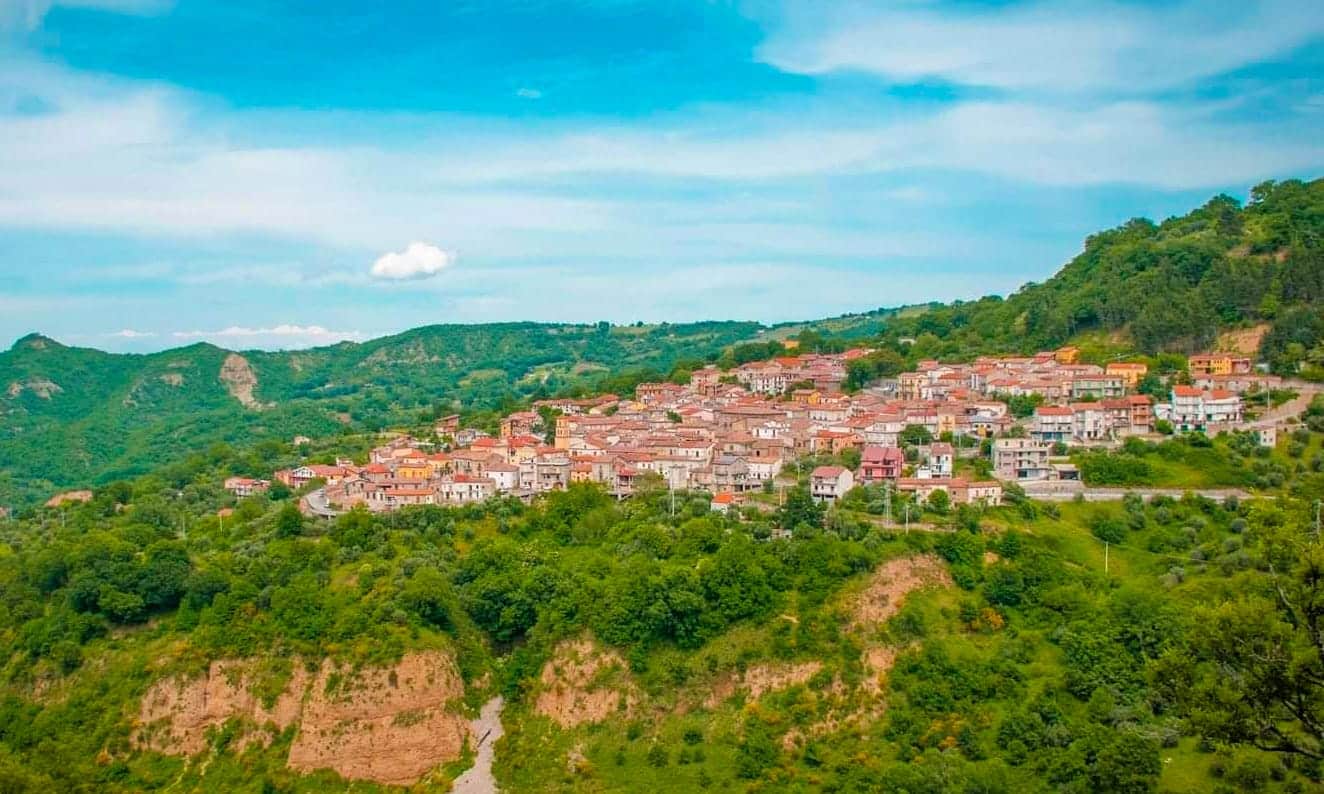Belonging to the Sarmento Valley, right at the base of the Pollino, Cersosimo is a picturesque village to be discovered that allows you to take a step back in time.

Belonging to the Sarmento Valley, right at the base of the Pollino, Cersosimo is a picturesque village to be discovered that allows you to take a step back in time.
Origins
The walls still visible today, are datable to the fourth century BC and are located on Mount Castello. It is assumed that they were built by Lucanian people who inhabited the area, as can be seen from the remains of the Greek-Lucanian acropolis. The village itself was built all around the Kyr-Zosimo monastery founded by monks coming from the East around the year 1000 when the village was dominated by the Normans. In the following centuries, Cersosimo saw the passing of the dominion of different feudatories among which the Sanseverino and Pignatelli families.
Between the sixteenth and seventeenth century, when the place was dependent on the nearby Nerpoli, the country saw a strong change in urban planning, when it was rebuilt almost entirely the town that is what you can see today. In the eighteenth century, Cersosimo passed under the rule of the Kingdom of the Two Sicilies and then under the Bourbons until 1861 when the unification of the Kingdom of Italy took place.
What to see
Not particularly large, Cersosimo allows the tourist to discover its interesting historical center where it is possible to recognize an urban fabric in Renaissance Baroque style, where there are also elements dating back to the Middle Ages and the ancient Greek-Lucan walls dating back to the IV century B.C.
The picturesque little alleys join the real fulcrum of the village, that is the central square where there is the parish church built between '400 and '500.
To see, just near the beginning of the old part of the village, the remains of the monastery of Kir-Zosimo whose peculiarity is due to its masonry made of stones of different sizes placed horizontally and joined together with mortar.
Another attraction to visit is the fifteenth-century church of Santa Maria di Costantinopoli.
Also the noble palaces of the suburb (XVIII-XIX sec.) fascinate the tourists because of their splendid portals in carved stone and wood, among which doesn't pass unnoticed the eighteenth-century Palazzo Valicenti.
Also interesting is the exploration of the archaeological area of Monte Castello where the Greek-Lucan Acropolis was located.
What to do
Those who visit Cersosimo can consider it as a starting point to organize interesting naturalistic excursions with Mount Carnara as the final destination. On the other hand, the village is inserted in the beautiful Sarmento valley and is located in the center of the Pollino National Park where it is possible to be in contact with nature. In fact, in addition to tourist excursions, it is possible to go on interesting horseback rides to discover the most picturesque places in the Park, as well as to have fun with your mountain bike on perfectly organized paths and trails. Don't forget that the village is part of the Naturarte itinerary.
Among the paths of the parks of Basilicata, Naturarte is an event that is organized annually from April to May where you can stay for an entire weekend to discover the protected areas of Lucania and where events such as concerts, cultural events and workshops are held.
The places offer panoramas rich in atmosphere that vary from the highlands of Pollino rich in scenic beech forests to enjoy the beaches of the nearby Ionian coast. The Pollino National Park is an unmissable destination for all nature lovers and birdwatchers as they could see kestrels, peregrine falcons, woodpeckers and eagle owls.
Typical dishes and flavors of the village of Cersosimo
As for many other small Italian realities, also in Cersosimo gastronomy is based on ancient traditions which prefer strong but genuine flavors. During the cold season, one of the typical dishes is represented by a soup made of legumes and pork rind which is cooked on a low flame inside an earthenware container called pignatta: it is called skorze arrej arrej. Pork is the main ingredient for other preparations as well, as pork is part of the local culinary tradition. Here, then, is a triumph of sausages, ham, spicy brawn and pork rind in jelly. Another specialty is the one that refers to dairy products ranging from delicate ricotta to pecorino, passing through caciocavallo and cacio ricotta.
The specialties of the village of Cersosimo that women frequently prepare, is represented by fresh homemade pasta, especially rasatelli and firzuli prepared with bread crumbs.
Not to be missed is the exquisite kid which is offered both grilled and baked. A good local habit is to eat at the end of the meal, dried fruits such as crocette, which are made of dried figs enriched by walnuts or almonds.
The local wine is excellent to accompany meals, as it is sincere and has an intense flavor.
Municipality of Cersosimo
Province of Potenza
Basilicata Region
Inhabitants: 591 cersosimesi
Altitude center: 548 m.s.l.
The City
Via Fratelli Bandiera - Tel. 0973/94023
IN CAR
BY PLANE
